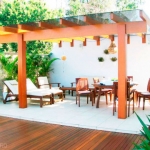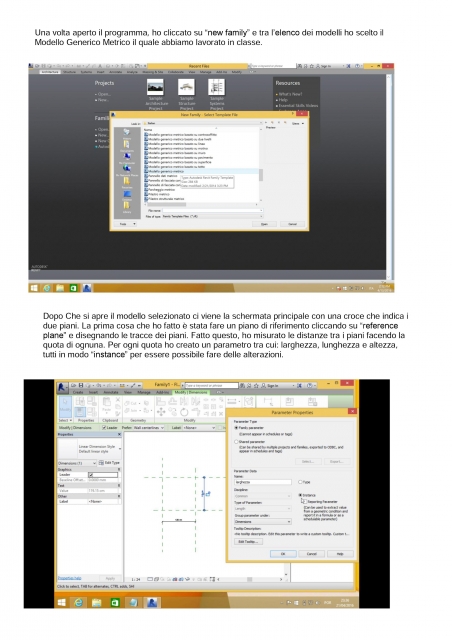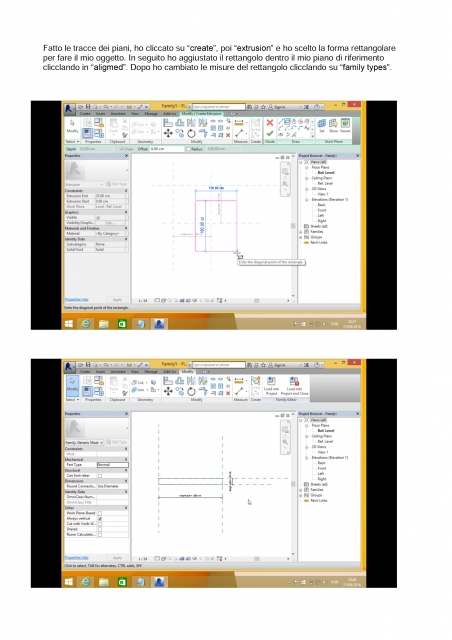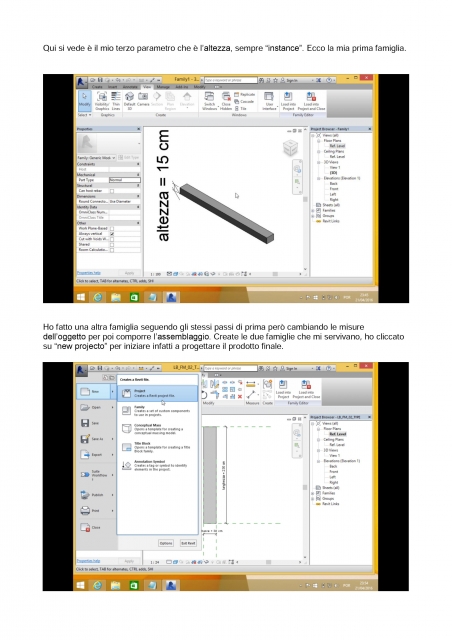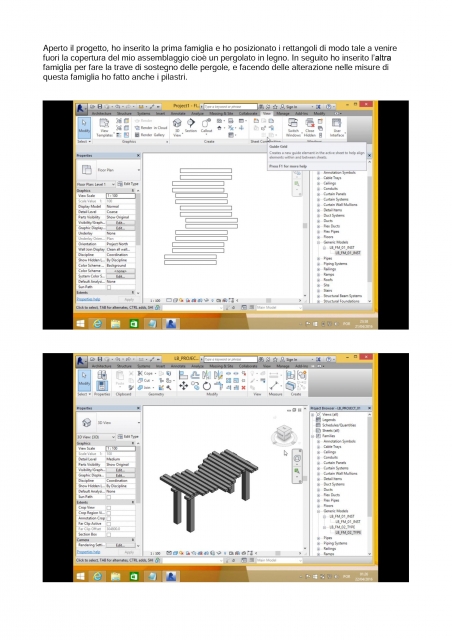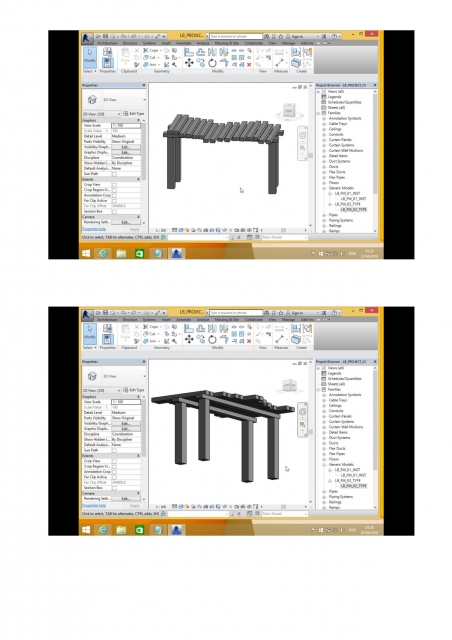Here we are in Romanina, on a empty area in wich to build our projects.
The selected buildings are the project we want to test. The test shown below analyses 4 peak months (in order: January, April, July, October) for three project ideas.
Project # 1: Salgado's proposal (reasoning below)
Front
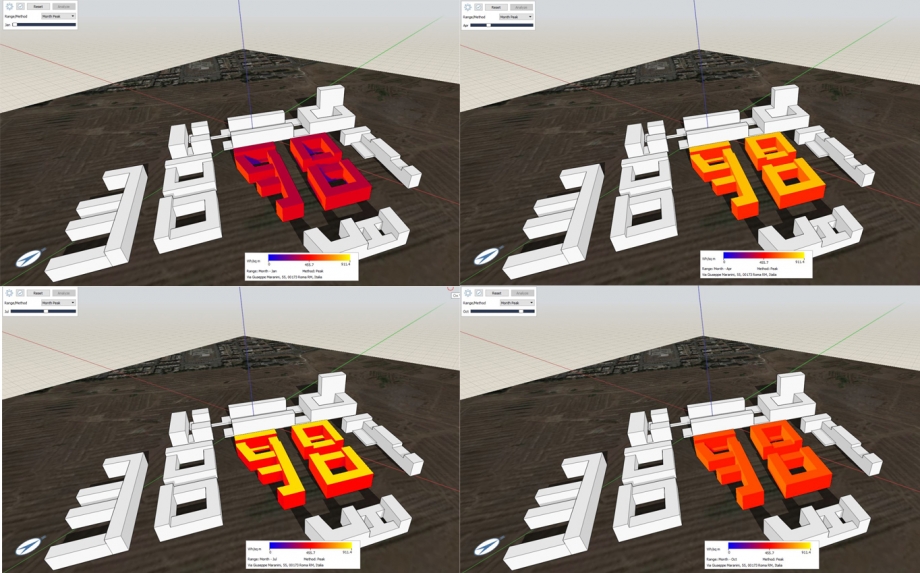
Back
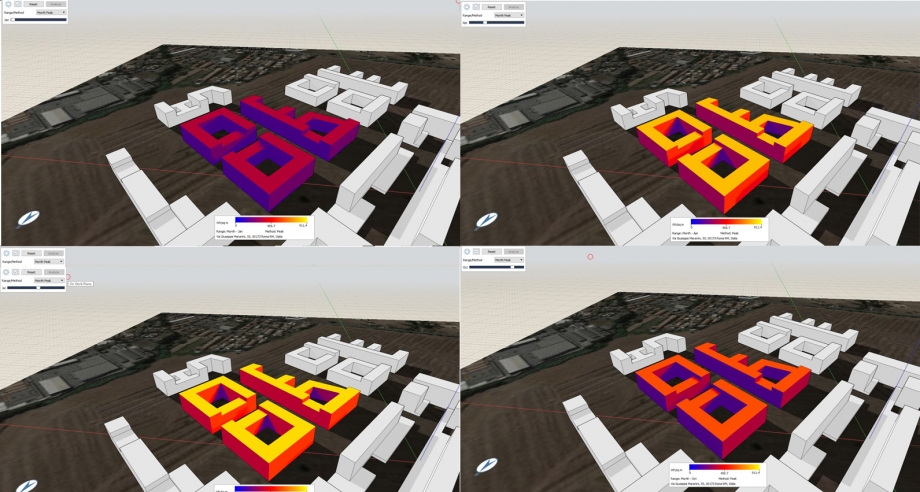
Salgado's project of courtyards is characterized by a 6 - 8 floors building in which we recognize a medium/high impact of the sunrays, especially on the front side. The courts are pretty always covered because of the relevant height of the buildings, that reflects a very difficult job for the sun to let the private green be illuminated. Even the two orthogonal roads which pass through the buildings are damaged by their height.
Project # 2: The big Cs (reasoning below)
Front
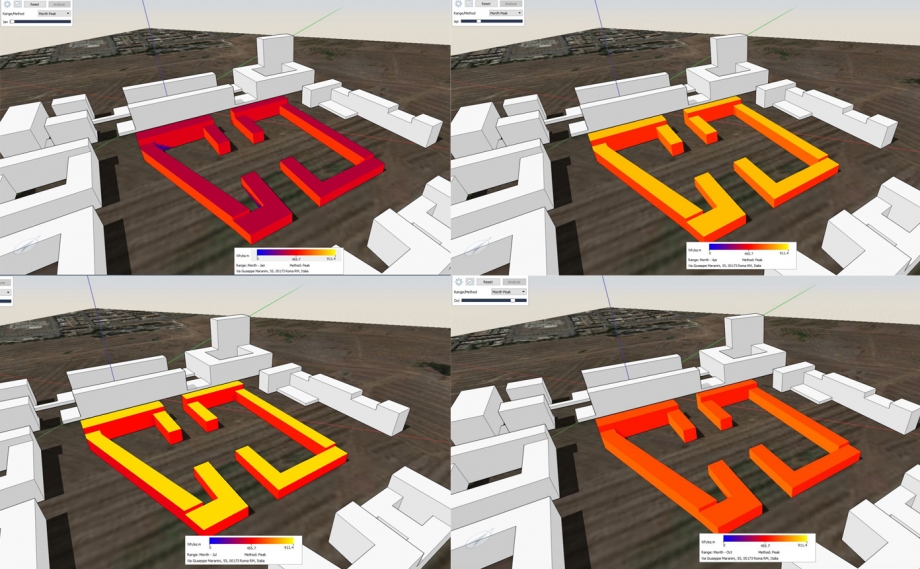
Back
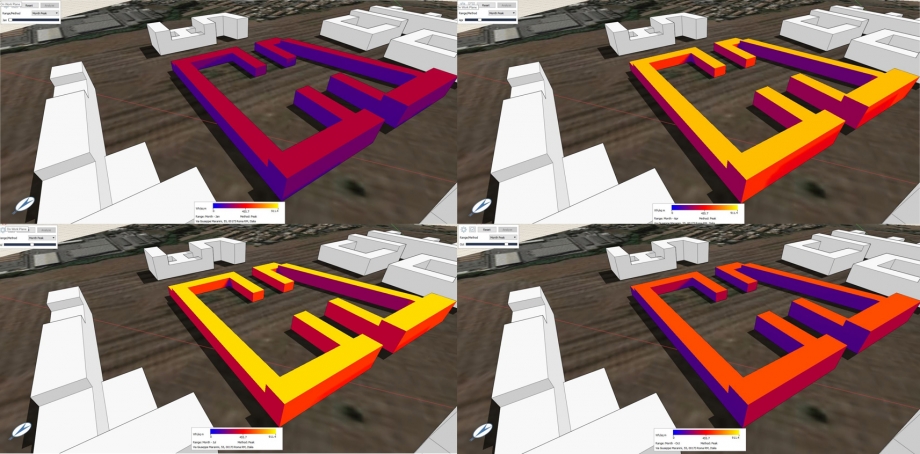
The alternative proposal called " The big Cs" has a new view of the courtyard space, it is wider and more free than the first attempt., it is now formed by two big Cs that are watching themselves. The new big space let the private green area be totally sun dipped for almost all the year, letting then the space be useful for the highest number of days per year. Although it seems to have the same perimeter of the Salgado's project, it has changed the height of every part to favourite the East side, then the solar path. Values of the test shows a generally higher percentage of solar impact on the surfaces than the previous project, that due to a most free central space where to live toghether and a minor attitude to close a space into a sub unit which forms a more complicated system. Here the road left is a way less "damaged" by the buildings form than before and the whole area shows itself after the test as a more uniform field where to work on.
Project # 3: East broken corners (reasoning below)
Front
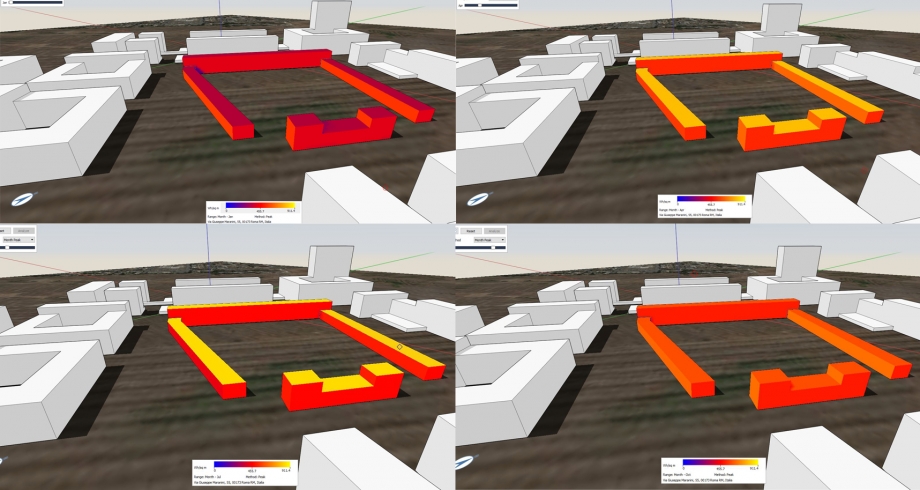
Back
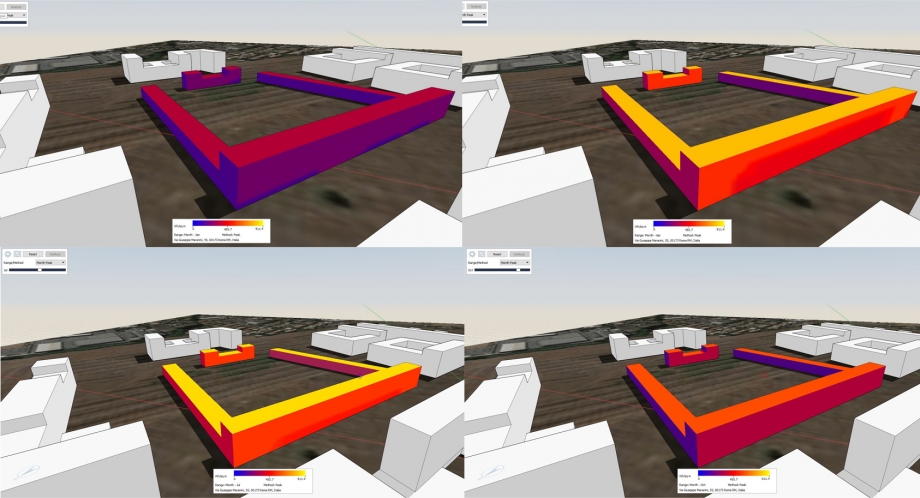
The third project is a more pushed idea of common courtyard usage, that reduces the internal space as a big and large square in which to develop the everyday activities. Here the test shows an even more uniform result of the solar impact, due to the absence of some parts that would have modified the geometry, and that's the point: our intent to create a most open space than before couldn't face the presence any other part of the buildings. This configuration wants totally to break the first's project idea: a small courtyard with a limited green area in the middle of it would appear as a stand alone part of a unit, which doesn't communicate with the rest of the space.
Now even the last road is no more, the actions are free, as the action of the sunrays.
Ven, 29/04/2016 - 14:39
Here we are in Via Balestra (in Roma Monteverde) with the selected model among the nearby buildings.
The digital render has been tested in three different times of the day, starting from early morning (7.19 AM, cloudy sky), through midday (13.36 PM) to afternoon (16.31 PM) and showed pretty similar shadows in every condition.
Here's the chronological order of the analyzed scenes, then the final considertions.
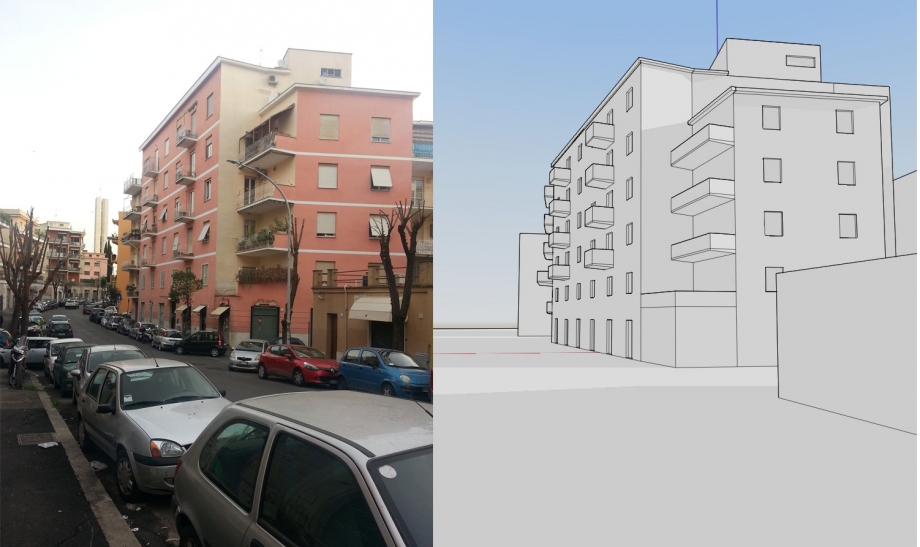
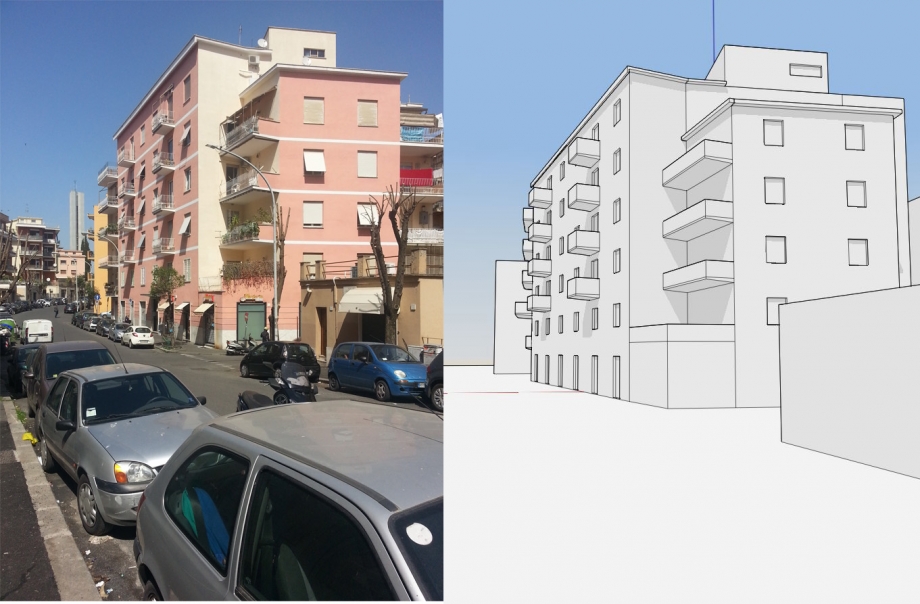
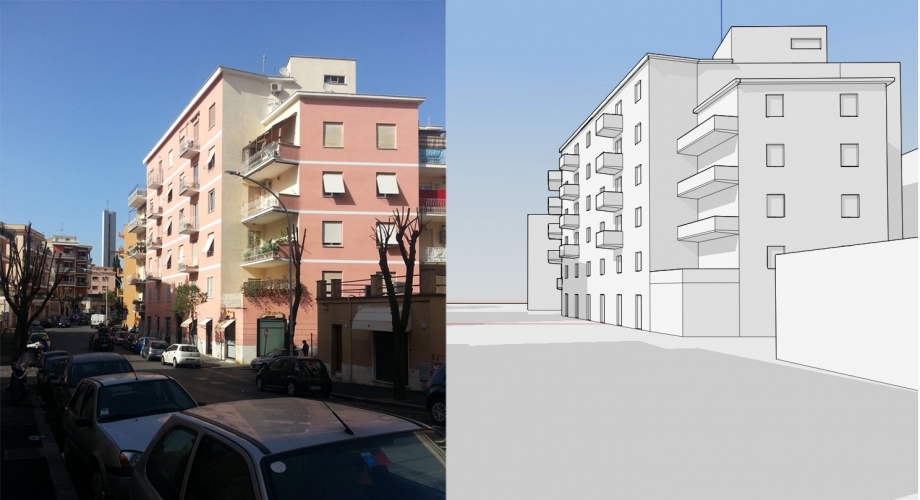
As shown, we studied the three scenes in top view and in 3D model view, we realize that the indirect light is ready to work on the two facades even if we are under a cloudy sky. The sun starts rising and produces very long shadows that cover the North - South oriented main street (Via Balestra), while the two orthogonal ones are already illuminated (Via Revoltella close to the North front and Via Vidaschi close to the South front). It's a huge shame that the East front doesn't receive the direct morning light, because of the pretty close building in front of it; the following scenes confirm the constant issue during the whole day.
When we approach to midday we see from both views that almost all the area is illuminated and shadows don't go upon the close buildings. We also see the exception of Via Revoltella, that is still covered by the shadows of the buildings it drives along. That is due to the form of the path, a long and strict climb that will never see the sun over it.
The choosen building looks like it is dazzled by the sun on the South - West front and that no artificial lights have to be turned on until we pass the afternoon.
Spring time helps us to be right about our reasoning: even if shadows begin to get longer, the building still holds the privilege to be fully hitted by the sunrays, while the North and the East fronts have no way to reach direct light (certainly known for the North side, but at the same time not so good to think about for the East side).
Ven, 29/04/2016 - 14:37
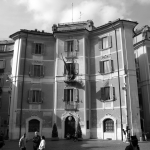 Piccione_Strizzi
Ven, 29/04/2016 - 14:22
Piccione_Strizzi
Ven, 29/04/2016 - 14:22
Photo taken in "Piazza Sant'Ignazio". The building has been realized by F. Raguzzini in 1727.
The square is one of the most suggestive places where to find light effects, due to its concave surface.
Ven, 29/04/2016 - 14:29
Apro Revit e creo due famiglie, la prima fatta di un componente ripetibile, la seconda con un componente a parametri variabili.
Dopo aver creato le due famiglie apro un nuovo progetto e carico al suo interno le due famiglie.
A questo punto creo la panchina con l'utilizzo delle due famiglie.



